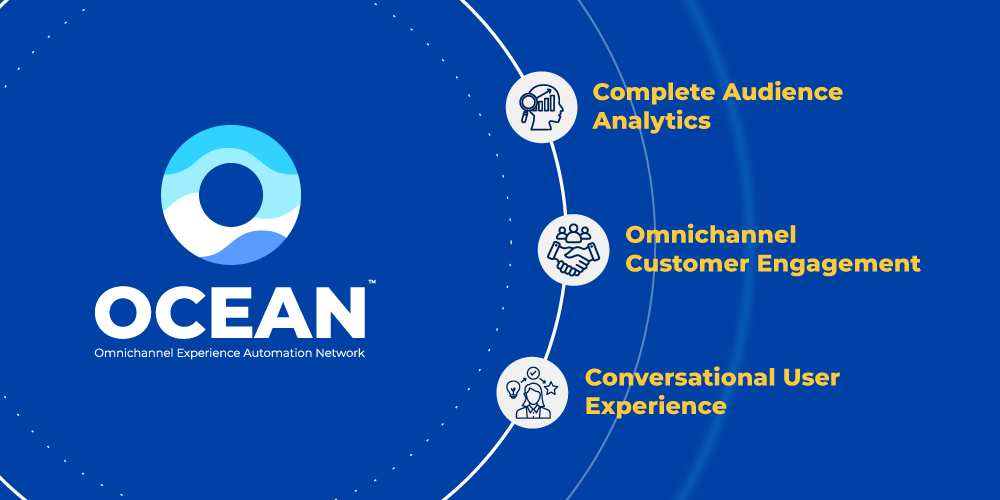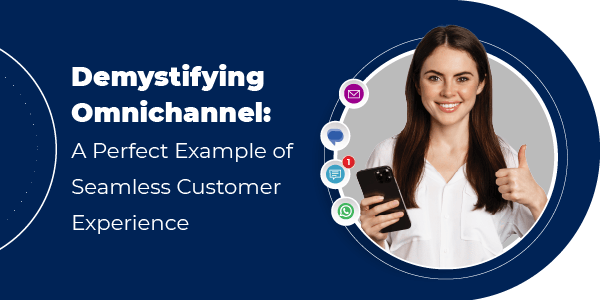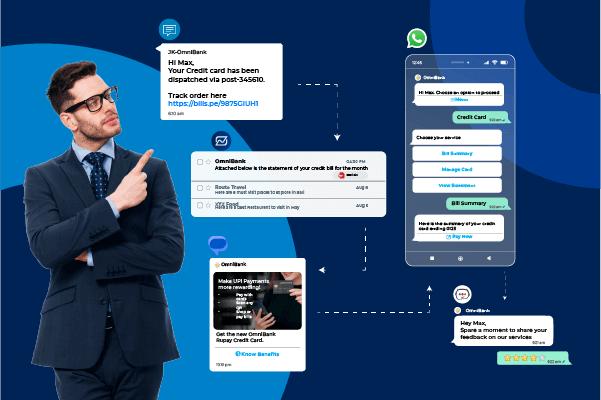
In an increasingly competitive marketplace, businesses are constantly searching for ways to not only attract customers but also to retain them. Customer loyalty is a prized asset, and one of the most powerful drivers of customer loyalty is brand engagement. Brands that actively engage with their customers are more likely to build lasting relationships and inspire loyalty. So, let’s dive in and explore the role of brand engagement in influencing customer loyalty!
In this article, we’ll explore what’s propelling the shift from multichannel to omnichannel communication and why businesses are increasingly adopting this approach.
Table of Contents:
- What is Brand Engagement?
- The Power of Customer Loyalty
- How Brand Engagement Influences Customer Loyalty?
- Creating a Cohesive Customer Journey
What is Brand Engagement?
Brand engagement goes beyond mere transactions; it encompasses the emotional connection and active participation customers have with a brand. It is the process of building a relationship between a brand and its customers through meaningful interactions and experiences. Effective brand engagement requires a deep understanding of the target audience, consistent messaging, and a commitment to delivering value beyond the product or service.
The Power of Customer Loyalty
Customer loyalty is the result of consistently meeting or exceeding customer expectations, and it offers several key advantages:




How Brand Engagement Influences Customer Loyalty?
Now, let’s delve into how brand engagement plays a pivotal role in cultivating customer loyalty.
-
Fostering Two-Way Communication
Effective brand engagement involves fostering a two-way communication channel with customers. This means not just talking to customers but also listening to their feedback, concerns, and suggestions. By actively engaging in conversations, brands can demonstrate their commitment to customer satisfaction.
 An illustrative example is Apple’s customer-centric approach to product development. They actively seek and incorporate user feedback into their product iterations, fostering trust and loyalty among their customer base. This commitment to two-way communication builds trust and loyalty among their customer base.
An illustrative example is Apple’s customer-centric approach to product development. They actively seek and incorporate user feedback into their product iterations, fostering trust and loyalty among their customer base. This commitment to two-way communication builds trust and loyalty among their customer base. -
Providing Value Beyond the Transaction
Customer loyalty is often built on the premise of providing value beyond the basic transaction. Brands that go the extra mile to enhance the customer experience, educate their customers, or offer additional benefits are more likely to foster loyalty.
 Amazon Prime serves as a prime instance in this regard. With its swift shipping, exclusive content, and a plethora of other perks, it provides substantial value to its members, extending beyond the realm of online shopping. By offering a comprehensive package of perks, Amazon has successfully built a loyal customer base that continually renews its Prime subscriptions.
Amazon Prime serves as a prime instance in this regard. With its swift shipping, exclusive content, and a plethora of other perks, it provides substantial value to its members, extending beyond the realm of online shopping. By offering a comprehensive package of perks, Amazon has successfully built a loyal customer base that continually renews its Prime subscriptions. -
Consistency in Brand Messaging
Consistency in brand messaging is a critical aspect of brand engagement. Brands that maintain a uniform and recognizable identity across all touchpoints, from advertising to customer service, are more likely to resonate with customers. Inconsistencies can erode trust and diminish brand loyalty.
 The enduring example of Coca-Cola attests to this. For over a century, the iconic red label and classic taste have remained largely unaltered, fostering a sense of nostalgia and reliability among generations of customers.
The enduring example of Coca-Cola attests to this. For over a century, the iconic red label and classic taste have remained largely unaltered, fostering a sense of nostalgia and reliability among generations of customers. -
Personalization and Customization
In the era of data-driven marketing, personalization and customization are powerful tools for brand engagement. By tailoring products, services, and communications to individual preferences, brands can create a sense of exclusivity and connection.
 A case in point is Netflix, whose recommendation algorithm scrutinizes user viewing habits to offer personalized content suggestions. This high level of personalization conveys an understanding of customer preferences, thus forging a stronger connection between the brand and the user.
A case in point is Netflix, whose recommendation algorithm scrutinizes user viewing habits to offer personalized content suggestions. This high level of personalization conveys an understanding of customer preferences, thus forging a stronger connection between the brand and the user. -
Loyalty Programs
Loyalty programs are a classic example of brand engagement. These programs incentivize repeat purchases and reward loyal customers. While loyalty programs are common, their effectiveness depends on their design and the value they provide to customers.
 The Sephora Beauty Insider program is an excellent example. It offers rewards, grants exclusive access to products, and furnishes personalized recommendations based on customer preferences, motivating repeat purchases and catering to the desires of beauty enthusiasts seeking to explore new products.
The Sephora Beauty Insider program is an excellent example. It offers rewards, grants exclusive access to products, and furnishes personalized recommendations based on customer preferences, motivating repeat purchases and catering to the desires of beauty enthusiasts seeking to explore new products.
Creating a Cohesive Customer Journey
Omnichannel communication revolves around crafting a cohesive customer journey. It allows customers to transition seamlessly between channels while receiving consistent messaging and experiences. For example, a customer may start researching a product on a brand’s website, continue the exploration on their mobile app, and then visit a physical store to make the final purchase. In an omnichannel strategy, the transition between these channels should be smooth and interconnected.
OCEAN – Omnichannel Experience Automation Network is a unified customer experience (CX) suite from Route Mobile that provides hyper-personalized customer engagement across different communication channels. It gives a holistic view under one single platform to deliver an integrated and personalized experience across a wide spectrum of mobile, web & social channels. It analyzes customer behavior, segments them by intent, and provides real-time insights to improve brand communication, loyalty, and advocacy.
Businesses that prioritize omnichannel communication are able to create a cohesive customer journey across channels and are better positioned to engage customers throughout their lifecycle. OCEAN can be a game-changer for your brand, enabling you to create deeper connections with your customers, boost loyalty, and drive business growth.
Schedule a Demo Call with our team today, who will walk you through the features, benefits, and real-world results that our solutions can bring to your organization.





